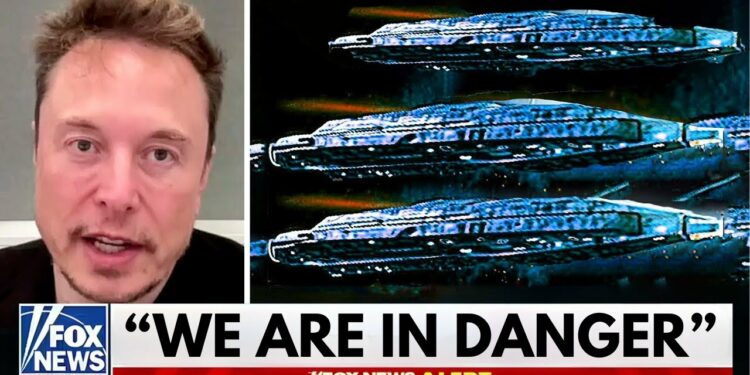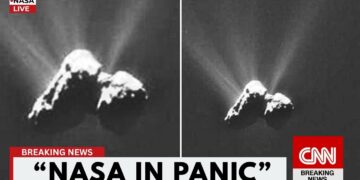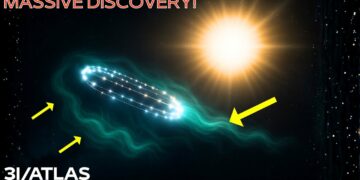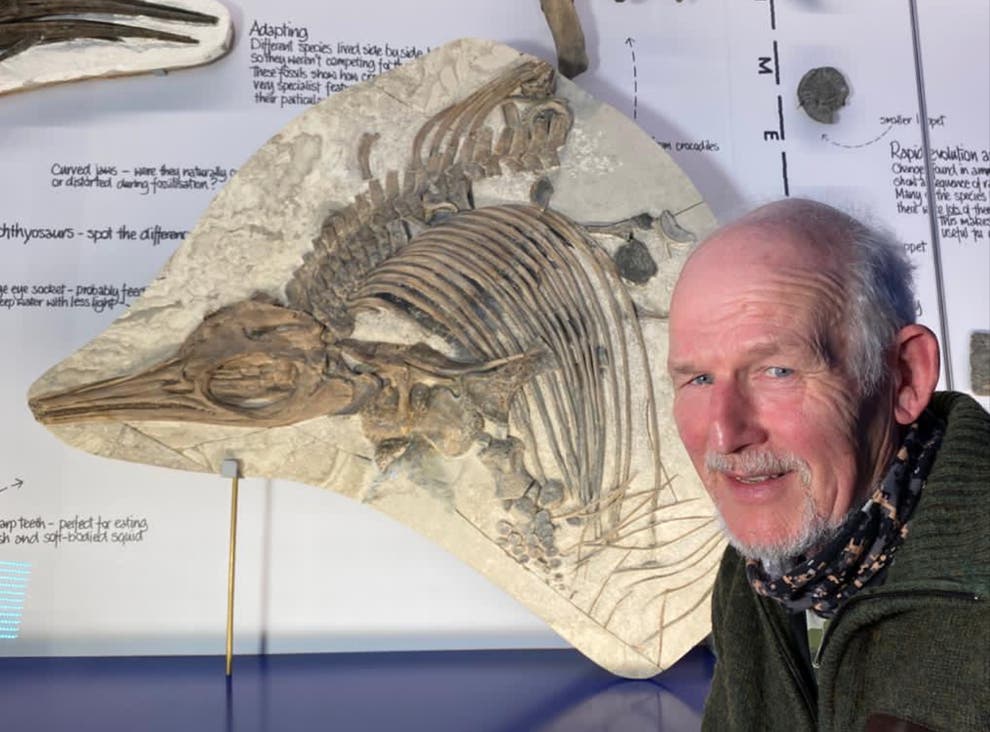In 2017, astronomers discovered an extraordinary object unlike anything previously observed. An elongated entity from interstellar space entered our solar system at remarkable speeds. Initially mistaken for a comet or asteroid, it exhibited unusual behavior: no visible tail, no outgassing, and an inexplicable acceleration. Harvard astrophysicist Avi Loeb even proposed it might be artificial, possibly an alien probe sent to observe us. Named ‘Oumuamua, it vanished into deep space as mysteriously as it appeared, leaving unanswered questions. Now, something extraordinary has occurred—’Oumuamua has returned, and it’s not alone. Elon Musk has called this the most significant discovery in human history. Scientists are racing to understand what they’re seeing as new objects, nearly identical to ‘Oumuamua, move through our solar system in ways that defy explanation. What are they? Where did they come from? And what do they want? Stay tuned as we explore the astonishing details of one of modern astronomy’s most shocking discoveries.
When ‘Oumuamua first appeared in 2017, its cigar-like shape, high reflectivity, and unexpected acceleration as it moved away from the sun baffled astronomers. Unlike comets, which accelerate due to outgassing, ‘Oumuamua showed no gas or tail, ruling out traditional propulsion. Some hypothesized it was a fragment from a distant planetary collision, while others, like Loeb, suggested it could be alien technology, such as a light sail propelled by solar radiation. Before it could be studied closely, it left the solar system, leaving scientists assuming they’d never see anything like it again. But then, against all odds, it returned. Astronomers detected a new object on a nearly identical trajectory to ‘Oumuamua, followed by more objects with the same bizarre traits. Suddenly, ‘Oumuamua was no longer a singular event—something profound was unfolding in deep space.
As astronomers studied these new arrivals, they found them almost identical to ‘Oumuamua: long, thin, with no outgassing, yet accelerating unpredictably. Unlike in 2017, these objects weren’t alone—at least two others followed the same path in what appeared to be a coordinated formation. This raised unsettling questions: Was ‘Oumuamua truly a lone visitor in 2017, or part of something larger? Could these objects be connected? Elon Musk emphasized the event’s importance, suggesting it could be a new natural phenomenon or something far more unsettling. Governments, space agencies, and private companies like SpaceX and Blue Origin launched investigations, and the situation grew stranger.
Unlike 2017, when ‘Oumuamua escaped before a response was possible, humanity was prepared this time. NASA, ESA, and private companies devised plans to intercept these objects before they vanished again. NASA proposed a probe using existing technology, China’s space agency announced its own mission, and ESA considered repurposing a spacecraft. This global effort underscored a belief that these objects are more than random space rocks. Time is critical—if humanity doesn’t act quickly, these objects, like ‘Oumuamua, may disappear forever, taking vital answers with them.
One chilling theory suggests these objects may not be natural. If they aren’t comets, asteroids, or cosmic debris, they could be probes from an unknown intelligence, similar to humanity’s Voyager missions. Could ‘Oumuamua and its companions be observing us? More disturbingly, are they responding to our detection? Astronomers noticed these objects adjusting their paths in ways that defy gravitational expectations, with one subtly altering its trajectory after a radar scan. Such behavior suggests intentional movement, prompting speculation about unknown propulsion or reactions to observation. Musk warned that if artificial, these objects represent technology far beyond ours. But a more alarming possibility emerged: what if they have a destination?
Calculations revealed one object adjusting its course toward the inner solar system, unlike ‘Oumuamua’s departure in 2017. This deliberate movement raised questions about whether it’s an artificial craft or influenced by unknown forces. Is it heading toward Earth? Governments and space agencies redirected telescopes and satellites, while intelligence agencies were briefed. Speculation grew about national security risks or advanced technology. Leaked reports suggested classified discussions about whether to intercept the objects or risk provoking an unknown response. The urgency is palpable—waiting too long risks losing them, but acting rashly could have unforeseen consequences.
Some researchers connect these objects to unexplained cosmic phenomena, like anomalous meteors or fast radio bursts, suggesting a larger pattern. Are they a message from an advanced civilization, or a warning? The coordinated effort among NASA, ESA, CNSA, and private companies like SpaceX reflects the event’s gravity. The question isn’t just what these objects are, but why they’re here. If natural, they represent a rare cosmic event; if artificial, they could herald a transformative encounter. Musk’s claim that this is humanity’s most important discovery underscores the stakes. Are we ready for what comes next?
What do you think these interstellar visitors are? A cosmic anomaly or evidence we’re not alone? Share your thoughts below and stay updated on this unfolding mystery.























